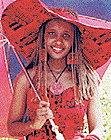 |  | 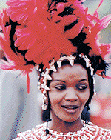 | 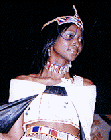 | 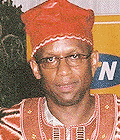 | 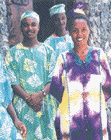 |  |  | 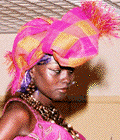 |  |
Accra is the capital and most populous city of Ghana, a nation on the coast of the western region of Africa. The city also doubles as the capital of the Greater Accra Region, and of the Accra Metropolis District with which it is coterminous. It is the administrative, communications, and economic centre of the country. Over 70% of Ghana's manufacturing capacity is located within this region district. Accra has been Ghana's capital since 1877, and contains public buildings reflecting its transition from a 19th century suburb of Victoriasborg to the modern metropolis it is today.

Among the attractions of Accra are the National Museum, with a display of exhibits that reflect the heritage of Ghana from prehistoric times to modern times, the National Theatre with its distinct modern architecture, the National Arts Center with local arts and crafts to suit all tastes, Independence Square, the Kwame Nkrumah Mausoleum, the Accra International Conference Centre, the Anglican Holy Trinity Cathedral, the fishing port at Jamestown and Makola Market.
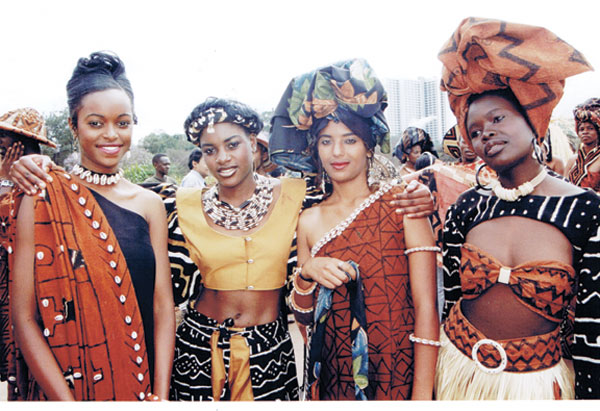
Accra was founded by the Ga people in the late 1400s. The word Accra is derived from the word Nkran meaning "ants" in Akan, a reference to the numerous anthills seen in the countryside around Accra. During part of its history, Accra served as a centre for trade with the Portuguese, who built a fort in the town, followed by the Swedish, Dutch, French, British and Danish by the end of the seventeenth century.
The site of present-day Accra developed into a sizable town around the original Ga town as well as British, Danish and Dutch forts and their surrounding communities: Jamestown near the British fort, Osu near the Danish Christiansborg fort (now Osu Castle) and Ussherstown near the Dutch Ussher fort. The four areas form the core of the modern city.
Accra Skyline
Accra was captured by the British in 1874, and, in 1877, at the end of the second Anglo-Asante War, Accra replaced Cape Coast as the capital of the British Gold Coast colony.
After the completion of a railway to the mining and agricultural interior, Accra became the economic centre of Ghana. Large areas were destroyed by earthquakes in 1862 and 1939, but the city grew around a seaport (now relocated to Tema), and later a brewery, expanding into neighbouring towns.
The Accra Riots in 1948 launched the Ghanaian campaign for independence, which in part led to Ghana's independence from the United Kingdom and nationhood in 1957,
Accra features a tropical savanna climate, with wet seasons and dry seasons. Accra actually has two rainy seasons, with the heaviest rains falling from April to July and a weaker rainy season in September and October. There is a brief dry spell in August and a more pronounced dry season from December through February. As is the case in a good portion of West Africa, the main dry season is accompanied by harmattan winds from the Sahara Desert, which between November and February can be quite strong. On average the hottest month is February; with a mean temperature of about 28°C (83°F); while August is the coolest month with an average temperature of about 25°C (77°F). However it should be noted that the "cooler" months tend to be more humid than the warmer months. As a result, during the warmer months and particularly during the windy harmattan season, it's a breezy "dry heat" and doesn't feel as warm as the more humid but "cooler" rainy season.
On the outskirts of Accra there are numerous popular secondary schools: Achimota Secondary School, commonly referred to as "Motown", which was founded in 1924 and opened in 1927; the Presbyterian Boys' Secondary, commonly known as "Presec"; Aburi Girls Secondary School, popularly known as (Abugiss), one of the well known girls' boarding school in Ghana; St Thomas Aquinas Secondary School, commonly known as "Quinas". Accra Academy (Bleoo), Kaneshie Secondary Technical (Kateco), Armed Forces Secondary Technical, Accra High (Ahisco), and others.
In the vicinity of Motown and Presec secondary schools is Ghana's first tertiary institution, the University of Ghana. It is located 13 km north at Legon. Quite recently, another tertiary institution - Ashesi University - was established in Accra. Ghana International School (GIS), a private non-profit A-Level school founded in 1955 for children from ages 3–18 is located in Cantonments, Accra. Abelemkpe is the home of Lincoln Community School. Lincoln Community School is a private, non-profit International Baccalaureate school for students aged 3–18, and was established in 1968.American International School of Accra is also situated in Accra, as is New York University's Ghana campus,
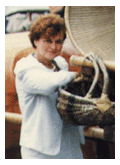 Africa Travel Fashion is sweeping the world...!
Africa Travel Fashion is sweeping the world...!by Muguette Goufrani
Who would have thought when we launched Africa Travel Magazine 14 years ago, it would become such a popular resource for fashion. Try "Googling" for Africa Travel Fashions or many Africa topic sometime, and you'll notice our website at or near the top. Ditto for Yahoo and MSN. According to Webtrends statistics month after month, we get more hits for fashion than any other topic - which tells us what attracts a growing majority of our readers. The Editor and I wear African attire almost daily at home or away, and we pay close heed to the simple effective ways Africans make a distinct fashion statement. To create a lasting impression and stand out from the humdrum, everyday world, consider kanga and kikoi fabrics in dazzling, eye catching colors.
Kanga Who?
A kanga is a pure cotton, with a border wide enough to cover you comfortably. It often features a strong, central design or theme, such as fertility signs, mountains, landmarks, soccer stars or popular singers. Many African ladies wear a kanga over their skirts while working in the fi elds in order to control the dust. A kanga is a perfect family gift that is extremely popular throughout Africa thanks to its other option - multiple use as a matching or contrasting head wrap. You may see a Swahili proverb on some kanga that is derived from the words "guinea fowl." Why? Because the original kanga were brightly colored Portuguese handkerchiefs intended for gentlemen traders and offifi cials. Theseitems were then sewn together by Africans to create a piece large enough to be worn head to toe - and called kangas because their brightness reminded Africans of guinea fowl. As village folks say, "kanga nenda na urembo, shani urembo na shani"-"the kanga struts in style. The kanga cloth is a lightweight loose weave fabric, it's versatile and easy to care for.
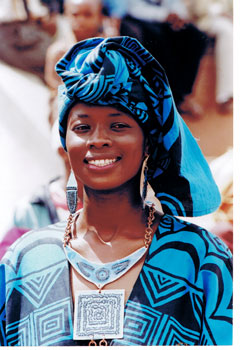 What's a Kikoi....?
What's a Kikoi....?The kikoi, woven from the fi nest cotton grown in the region, is a rectangle of pure cotton with a work of art inspired by the vibrant colors of East African Coast. The traditional way of wearing kikoi is simply wrapping it around the lower part of your body and tucking it in at the waist. Inspired by a multitude of colors and shapes, the kikoi are woven in thousands of different
Photos: Top - Zanzibar girls give our ATA delegates a rousing welcome to the Ecotourism Symposium. Above - Esterella of Cameroon. Left ATA delegates from USA wear colorful African garb at 31st World Congress in Accra, Ghana. colors with hand made tassels at the two widths and have become the must have accessories for the beach. In Zanzibar, designers use these two popular options in a variety of ways. For example, in the photo at the top of the page I took while attending an ATA symposium, they carried the theme right through to the sun umbrellas that complimented their attire; What a statement they made in their
welcoming greeting - Jambo Zanzibar! These cloths may have originated with what Arabs traders wore during commerce along the East African Coast. Both varieties make a truly treasurable gift. Cameroon's celebrated designer Esterella makes effective use of the kikoi and kanga in her award winning fashions. We have had the pleasure of seeing on display on our two recent trips to that friendly West African country that's rich in resources and talented entrepreneurs such as Esterella
No comments:
Post a Comment